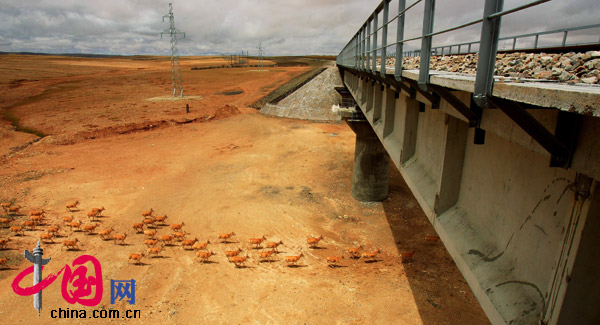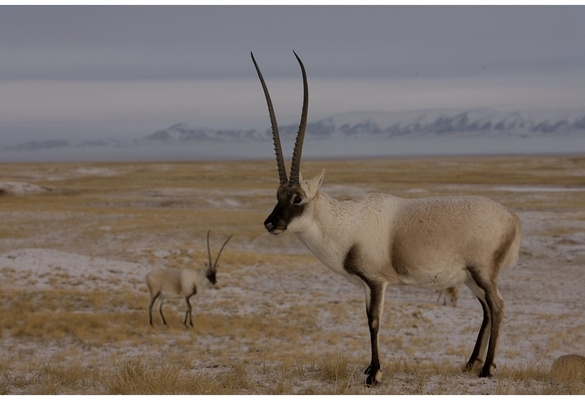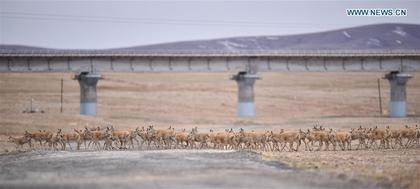Qinghai-Railway does not affect migratory patterns of Tibetan antelopes

“Since 2004, data from surveys indicate that animals usage of the passageways gradually increased from 56.6% to 100% today.” The planning department head of the Tibet Qinghai Railroad company Haijiang Yang said, and after the entire Qinghai-Tibet Railway went into service and operations rare animals such as the Tibetan antelope have not been affected in the regard of migration patterns.
The Qinghai-Tibet Railwaypasses through the Kekexili Nature Reserve, the Sanjiangyuan National Nature Reserve and the Qiangtang Preservation Area amongst others. It has an average altitude of 4000 meters. It is the main habitat area for the Tibetan antelope, a rare species in the world. Simultaneously, there are also wild yaks here, the Tibetan wild donkey and other rare animal species amongst which there are 14 relatively active animal species on both sides of the railroad.
According to what was said, in order to limit the effects brought about on the habitat and ecological system by breaking up Tibetan antelope 33 passage tunnels were installed for the animals from Golmud to Lhasa with more than 58 kilometers of tunnels.
Since 2004 the Golmud to Lhasa stretch of the railroad went into the peak period and the Qinghai-Tibet Railway Company entrusted the Chinese Academy of Sciences Animal Institute and the Northwest Endangered Species Research Center amongst other organizations to conduct ongoing survey for animal activities along the railroad.
Haijiang Yang stated that, “surveys done by researches regarding animal migration activity along the railroad indicate that the animal usage of tunnels has gradually increased each year.” The Kekexili Natural Preservation Area and surrounding area Tibetan antelope numbers have increased proving that the establishment of the railroad has not influenced the animals ability to find food, migrate and reproduce.
Since the peak period of railroad construction in 2004 1660 antelopes have crossed through the tunnels, and since the 2006 construction period started antelopes that passed through and passed through and returned numbered to 2122 and 2959 respectively yet after 2011 both numbers were more than 5000.
The main distributions of Tibetan Antelope are in Tibet, Qinghai and in the western Xinjiang high altitude barren areas and it is a class one protected animal in China. According to statistics, up until now, the number of the Tibetan antelopes on the Qinghai-Tibet plateau has returned to 200,000.
Your Comment
Name E-mailRelated News
-
;
-
-

-
Qinghai-Tibet Railway does not affect migratory patterns of Tibeta
After the Qinghai-Tibet Railway went into service, rare animals such as the Tibetan antelope have not been affected in the regard of migration patterns.
-
-
-

-
Two caught for poaching Tibetan antelopes
Two fugitives were arrested 11 years after they, along with four accomplices, slaughtered more than 500 endangered Tibetan antelopes in a nature reserve in Qinghai.
-
-
-

-
Tibetan antelopes migrate to give birth near Zhuonai Lake
A flock of female Tibetan antelopes run to the breeding area Zhuonai Lake after crossing the Qinghai-Tibet Railway in Hol Xil Nature Reserve, June 7, 2016.
-
Based in Lhasa, Tibet Vista is a Tibet travel agency that specialized in Tibet permit, and Tibet tours for both private and group travelers at a local price!
•4 Days Lhasa City Group Tour from USD 460 •8 Days Everest Base Camp Group Tour from USD 850 •15 Days Mt.Kailash Group Tour from USD 1780 •2016 Tibet Train Tours from Beijing, Shanghai, Chengdu, Xining,etc










